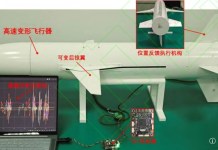In the latest development in the India-China border standoff in Eastern Ladakh, the Chinese PLA forces are hesitant to withdraw and disengage from the Gogra and Hot Springs – indicating that the silent border tensions in the Himalayas are far from over.
According to reports, the PLA is still asserting pressure on the Indian army in the contested areas, and has still deployed its long/medium-range air defense systems (HQ-9 and the HQ-22) near the Indian territory, being closely monitored by the intelligence agencies.
The renewed border standoff between India and China comes when the global comunity was anticipating gradual ease in tensions between the two nuclear superpowers after a year of intense military and diplomatic confrontation.
In the recent Corps Commander level meeting, the Chinese PLA showed reluctance to withdraw from Gogra and Hot Springs areas. These specific points of friction are the PP-17A and PP-15 respectively, and the armored columns from both sides had earlier disengaged from Pangong Tso and Kailash Range earlier in February.
According to reports, the Chinese PLA had earlier agreed to pull back from these two Patrolling Points (PP-15 and PP-17A) but later refused to vacate.
However, the strength of soldiers manning the post has decreased from a company to a platoon. A company of the Indian Army consists of 100 to 120 soldiers while a platoon consists of 30-32 soldiers.
Earlier, in a pinching remark, the Chinese PLA said that India should be happy with what has been achieved.
China Recruiting Tibetan Soldiers
A report in the Indian newspaper HindustanTimes also mentioned that the Chinese PLA has been holding special recruitment drives in its Tibetan Autonomous Region since early 2021.
Also, separate interceptions by the intelligence agencies have indicated that the PLA shall make up a new “Special Tibetan Army” unit, which could be the first Chinese military formation with a specific ethnicity.
The report also mentioned that PLA officials from Lhasa visited Rudok town in Ngari Prefecture in the far west of Tibet Autonomous Region (TAR) in the third week of February to recruit Tibetans as soldiers.
These officials later traveled to Zanda or Tsamda County, one of the border counties of TAR to select Tibetan recruits from several PLA camps for possible induction into the special unit, according to intelligence inputs.




